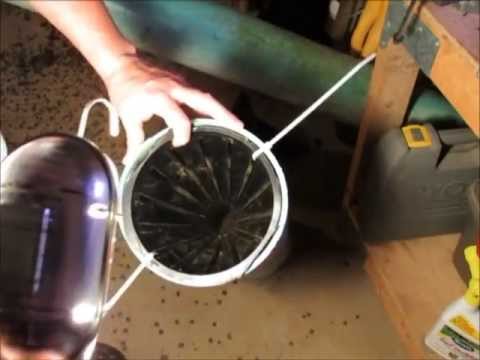How to make a Simple and Effective Catfish Pipe Trap
There are a number of commercially-available catfish traps on the market today, and many of them are quite effective. However, they can be expensive and some can become easily damaged. Let’s take a look at how you can improvise and make some simple but effective traps with some basic and common material. This is a great way to catch fish with minimal effort, and they only take a few minutes to assemble.
All you need for this trap is a length of PVC sewer or drain pipe that is at least 5” in diameter and at least three feet long. This will be wide enough to keep the fish from being afraid to enter the trap, and its length will allow the fish to swim inside and get trapped. Keep in mind that you can scale up or down depending on the size of the fish that you want to catch as well, but the diameter and length should be at least three times bigger than the catfish.
You will need to fashion some type of plug on both ends that will allow the fish to swim inside while preventing it from escaping after it goes for the bait. You can either buy catfish trap throats that are specifically designed for this purpose, or you can make your own. The throats resemble a cone that has its side walls cut into thinner strips that expand as the fish passes through and closes once the fish passes is inside.
 You can make your own out of a small plastic bucket or basket, and sandbox toys are excellent options. You can also take a sheet of thin plastic that is flexible and cut out a circle that is a little bigger than the diameter of the pipe. If you are using a bucket, the first step is to cut off the bottom. Then you want to cut strips that will be angled to a point on the bottom and about two inches thick around the top of the bucket. Make sure that you leave some space at the top of the cuts so that they don’t detach from the rim of the bucket. Bend them inwards until they can hold their shape. The result should be a cone that expands and closes with minimal resistance.
You can make your own out of a small plastic bucket or basket, and sandbox toys are excellent options. You can also take a sheet of thin plastic that is flexible and cut out a circle that is a little bigger than the diameter of the pipe. If you are using a bucket, the first step is to cut off the bottom. Then you want to cut strips that will be angled to a point on the bottom and about two inches thick around the top of the bucket. Make sure that you leave some space at the top of the cuts so that they don’t detach from the rim of the bucket. Bend them inwards until they can hold their shape. The result should be a cone that expands and closes with minimal resistance.
To use a plastic sheet, simply take a razor knife and start making pie cuts outward from the center. Make sure to leave some room around the edge so the pieces won’t break or fall off. Bend each piece inward from the outer rim so that they all meet in the center in a conical fashion. Keep bending until the pieces are pliable so they produce minimal resistance when the fish passes through. You also may want to consider cutting off some thin strips along some of the sides of the pieces in order to create some open spaces in the cone. This will make it more tempting for the fish to swim inside.
The next step is to attach each piece to the ends of the pipe. The easiest way to do this is with zip ties, but you can also use rope or even some thin wire. Drill four to six evenly spaced holes that are about an inch from the top of each end of the pipe. Make corresponding holes in the caps that you just created and tie them on to the pipe. Cut away any excess material so that the edges of the caps are flush with the pipe to eliminate any rims that can prevent the pipe from resting on the bottom of the water.
Place the bait in the center of the pipe, set it in a spot where you expect to find catfish and secure it with some rope to keep it from moving around. That’s it. Catfish should be drawn to the bait and swim inside the pipe as long as the openings are big and flexible enough. However, you may need to experiment and improvise in order to get things just right. Try it for yourself, and see how this trick can help you to catch fish without actually needing to spend time with a hook and line in the water.



